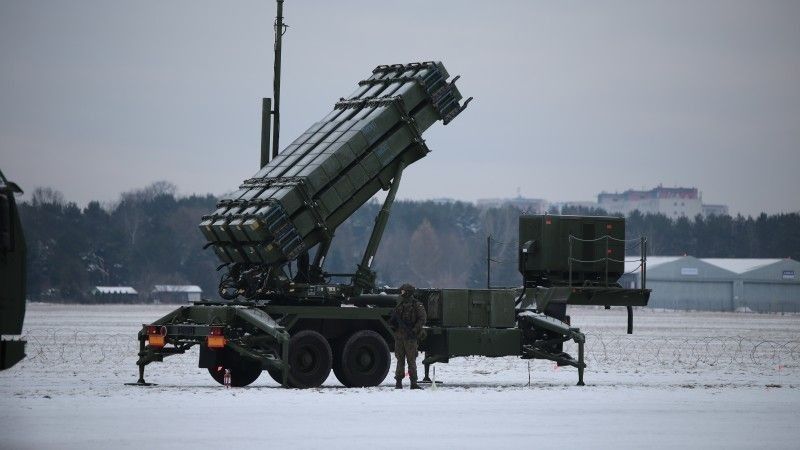Armed Forces
PAC-3 MSE Missiles delivered for the Polish Patriot Systems

Photo. M.Mitkow\Defence24.pl
The Polish Armed Forces have just taken delivery of the PAC-3 MSE missiles used in the IBCS/Patriot system procured within the framework of the Wisła programme.
The delivery of the PAC-3 MSE missiles was announced by the spokesman for the Armament Agency, Lt. Col. Krzysztof Płatek. He stressed that the deliveries of the Wisła system elements are happening in an ongoing manner. PAC-3 MSE missiles are also being delivered - alongside the launchers, sensors, auxiliaries, or the IBCS components. These missiles will serve as the primary effector of the Polish Patriot systems.
Poland procured 208 PAC-3 MSE missiles throughout the first phase of the Wisła programme - for use in combat. The missiles are being manufactured by Lockheed Martin. They have been designed to counter a full spectrum of air threats, including ballistic and cruise missiles, rotary- and fixed-wing assets, and UAVs. The missile is the latest of the Patriot system effectors - it has gained combat-ready status in 2016. The M903 launcher can hold up to 12 missiles as such. During phase one, 16 launchers were procured (four per single fire unit, eight per single battery).
Do 🇵🇱Sił Zbrojnych sukcesywnie dostarczane są elementy zakontraktowane w ramach I fazy programu #WISŁA. Oprócz wyrzutni #PATRIOT, systemu #IBCS, radarów i innego sprzętu wojskowego na wyposażenie 3 Warszawskiej Brygady Rakietowej Obrony Powietrznej trafiły też pociski PAC-3 MSE. pic.twitter.com/61GeVRR1m8
— Krzysztof Płatek (@krzysztof_atek) March 9, 2023
The missiles in question feature an active radar seeker. They do not require a dedicated guidance radar, it's enough for them to receive targeting data of proper resolution. Data as such may be fed from the IBCS system using all of the radars integrated within the network. In the USA, the radar list includes Patriot and Sentinel sensors. In the Polish system, we know about Bystra radars and newer models, in the future possibly the F-35 may also serve as a sensor here. Thanks to that, the Wisła system may work using the "any sensor, any shooter" principle.
The latest PAC-3 MSE variant is derived from the legacy PAC-3 CRI missile, used in the earlier PAC-3 Patriot systems. PAC-3 MSE features a bigger, dual-impulse rocket motor. The missile design has been changed as well. Thanks to the above, the range and altitudes at which the missile remains lethal have been extended, compared to the PAC-3 CRI. The same applies to the missile's capability to intercept the most challenging, maneuvering threats. In practical terms that translates into a pursuit of a capability to intercept maneuver-capable ballistic missiles, such as the Russian Iskander system effectors.
The effective range and altitude remain confidential. The altitude, most certainly, exceeds 30 thousand meters, while the range, as in the case of any other system, depends on the threat - as it is longer for air-breathing targets (aircraft, cruise missiles) than for the ballistic missiles that are faster. PAC-3 MSE offers a broad set of capabilities in countering fast-moving, maneuvering threats. The US DoD officials do admit that the capabilities of the missile (likely with regard to missile defense) will only be fully used when LTAMDS radar is introduced, as current Patriot radar does not enable to use the full engagement envelope of PAC-3 MSE.
The PAC-3 MSE is used to attack the targets using the "hit-to-kill" method (direct hit is required). That characteristic is common for all PAC-3 missiles. At the same time, the missile features a lethality enhancer explosive charge, providing a lethality boost.
The Polish defence industry has obtained some know-how regarding the PAC-3 MSE missiles, including the manufacturing capacity for a section of the propulsion system - the ACS/ACM maneuvering motors, and the launchers as well. During Phase II of the Wisła programme, it is planned that another six batteries are procured, with LTAMDS radars and PAC-3 MSE missiles. For some time now, Lockheed Martin has been working on integrating the PAC-3 MSE missiles on naval platforms, to enhance missile defence capabilities of certain Navy vessels.
